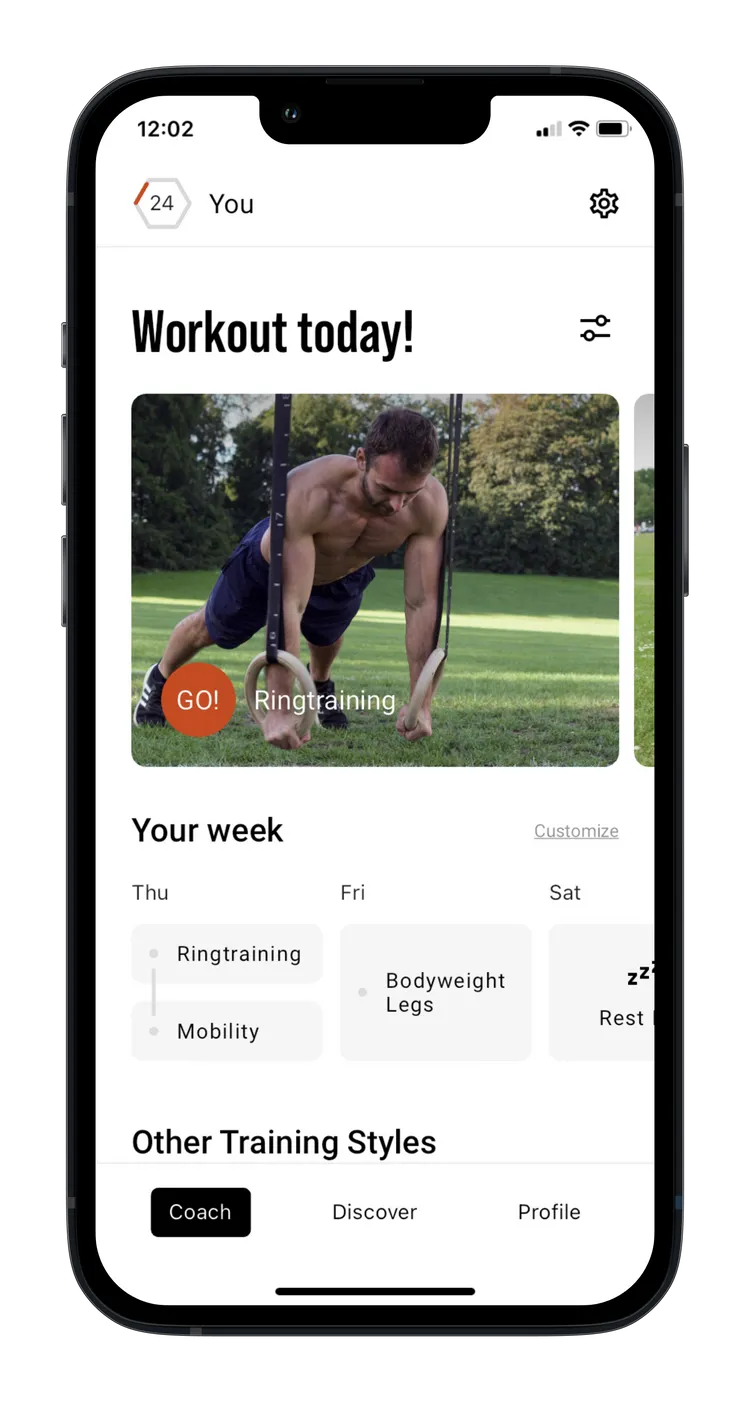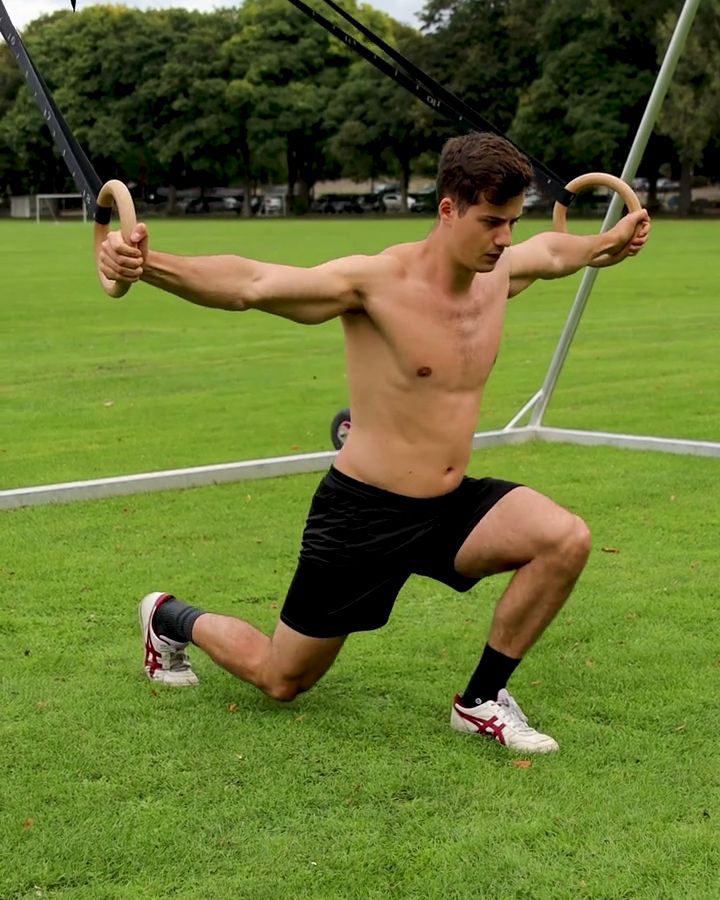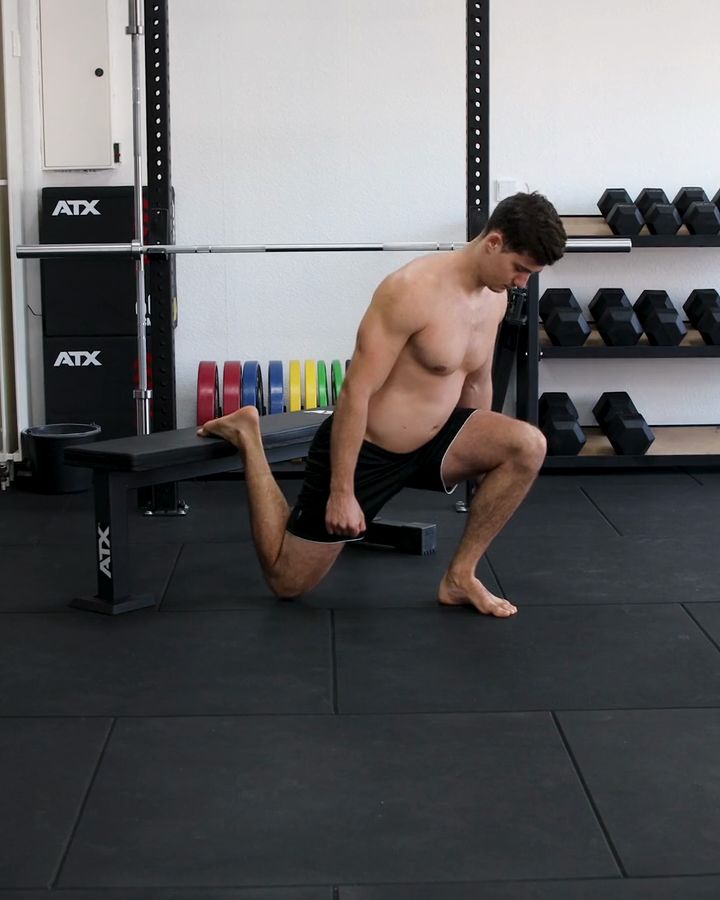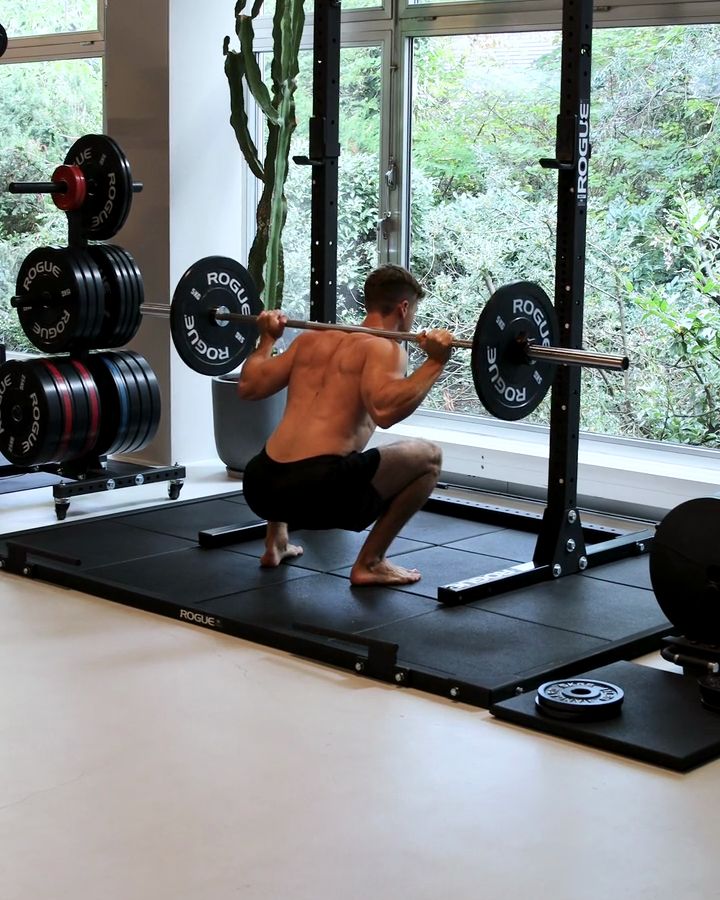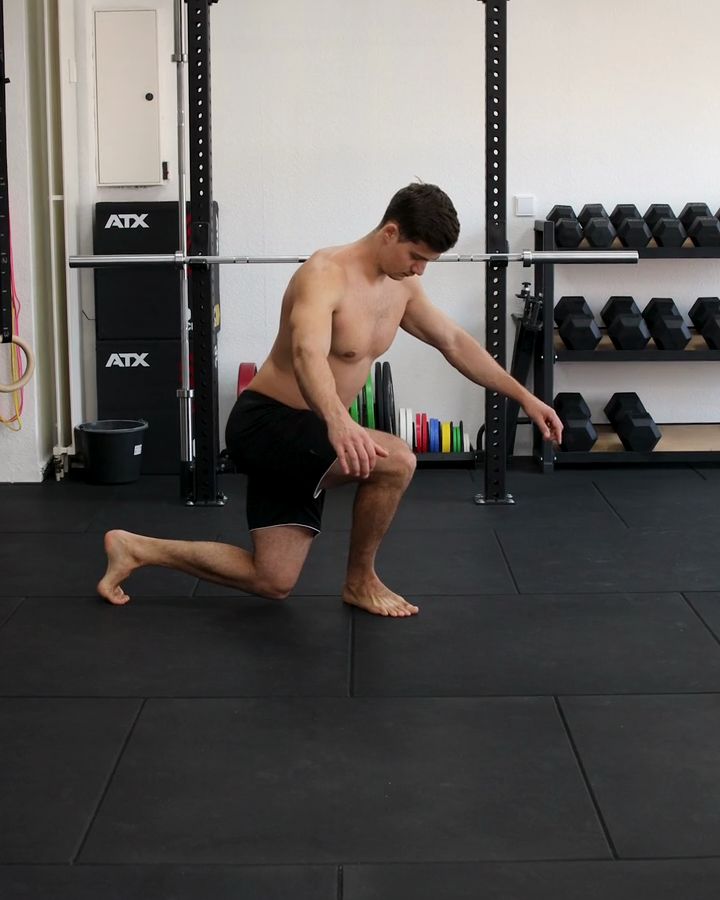Assisted Lunges
Supported lunges with gymnastic rings are an excellent exercise, especially for beginners. They specifically target the leg muscles, particularly the quadriceps and glutes, while the rings provide additional stability and balance. This support reduces the risk of injury and makes it easier to perform the exercise correctly. At the same time, the movement promotes hip mobility and increases leg strength, forming the foundation for more advanced exercises.
A variation of this exercise is performing regular lunges without support or with added weight. Unlike supported lunges, these require more balance and greater control of movement.
Necessary equipment
Assisted Lunges - the correct execution
- Count each side as a repetition
- Make a big failing step backwards
- Your front foot is completely on the floor
- Lead the rear knee towards the ground
- Use the rings to keep the balance
- Support yourself as much as necessary with the poor
The exercise Assisted Lunges for Beginners is intended to be used as a hypertrophy exercise.
Which muscles are trained by Assisted Lunges for Beginners?






Primary trained muscles for Assisted Lunges for Beginners
Glutes - The gluteus maximus is the large muscle in your buttocks. It is important for extending the hip, moving your leg backward, and stabilizing the hip joint.
Quadriceps - The quadriceps femoris is the large muscle at the front of your thigh. It extends your knee.
Alternative variants of Assisted Lunges:
Assisted Lunges for Intermediate with gym rings
In advanced supported lunges with gymnastic rings, the supportive function of the rings is gradually reduced to increase the demands on balance and muscular control. The rings are moved sideways in front of the body, making it impossible to pull upward as in the beginner version.
Necessary equipment
Assisted Lunges for Intermediate with gym rings - the correct execution
- Count each side as a repetition
- Make a big lunge forward
- Your front foot is completely on the floor
- Move the back knee towards the floor
- Use the rings to keep the balance
- Support yourself as much as necessary with your arms
Similar exercises to Assisted Lunges for Beginners
Bulgarian Split Squats
The Bulgarian Split Squat helps to balance the strength differences between your legs, as each leg is trained individually. Due to the large range of motion, the exercise improves your mobility in the hips, ankles, and knees. It is particularly popular because, unlike Barbell Squats, it does not put a heavy load on the lower back.
Barbell Back Squats
Back squats are one of the fundamental exercises in strength training. They are typically performed with a barbell, allowing for progressive overload. Back squats primarily target the thigh muscles, particularly the quadriceps and glutes. Additionally, they strengthen the core and lower back, as these muscles are crucial for stability and control during the exercise.
Back squats are among the most well-known foundational exercises in strength training, as they promote overall body strength and stability, improve functional movements in daily life, and, when combined with other strength exercises like deadlifts or lunges, provide an excellent foundation for leg training.
Curtsey Lunges
Curtsey lunges are a variation of the classic lunge, where the back leg is crossed behind the body. This movement particularly targets the outer thighs and glutes, especially the side glute muscles. The crossing motion also promotes knee joint stability and improves coordination. Compared to the normal lunge, curtsey lunges work the side muscle groups more intensively, making them an effective exercise for balanced leg training.
This could also be interesting
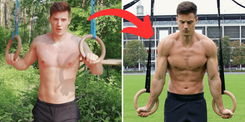
Calisthenics Body Transformation – How to Build a Strong, Lean, and Athletic Physique
Transform your body with Calisthenics! Build muscle, burn fat & achieve a shredded physique with bodyweight training. See real before & after results!
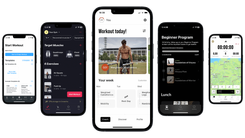
The Best Fitness Apps in 2025: Our Top 10 Recommendations
Don’t miss the best fitness apps of 2025: surprising favorites, free options, and perfect tools for your workouts. Find the ideal app today!
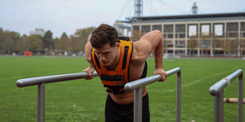
Complete Calisthenics Skills List – 40+ Exercises from Beginner to Pro
Which calisthenics skills should you learn first? And which ones will really help you progress? In this article, you’ll find a complete list of over 40 exercises – from the very basics to the toughest moves for professionals. Each exercise comes with instructions, so you can immediately integrate them into your training.
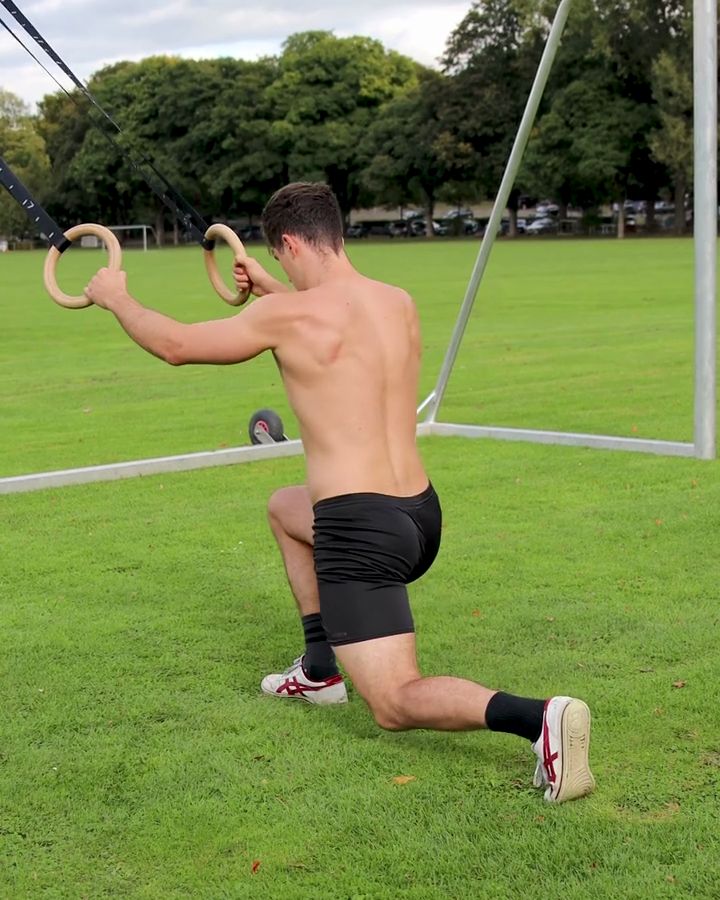
~e5724973d14549c23ea8a586b5736b36.png?alt=media)
